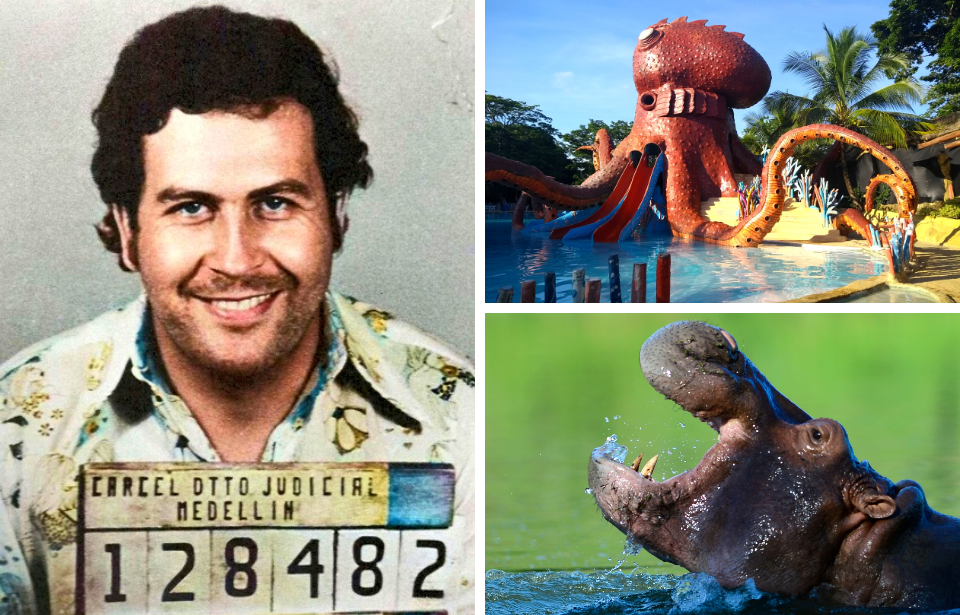Pablo Escobar was a notorious Colombian narcotic lord who operated one of the largest cartels in the world, the Medellín Cartel, during the 1980s and ’90s. He became the wealthiest criminal in the world, and at the time of his death, his net worth had soared to $30 billion – equivalent to roughly $70 billion in 2022. With all that money, Escobar chose to spend a pretty penny on a Colombian estate known as Hacienda Napoles. It was quite a luxurious place to vacation. Following his death, however, the estate exchanged hands and was ultimately transformed into a theme park.
Hacienda Napoles: Escobar’s favorite estate
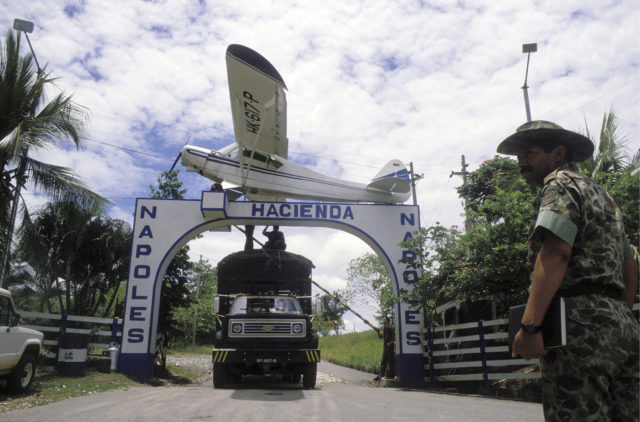
In 1978, Escobar purchased a 7.7 square-mile plot of land in a town called Puerto Triunfo, approximately 93 miles east of Medellín, Colombia. This would become the location of his future luxury palace, Hacienda Napoles, eventually one of his favorite properties out of the many he owned. As the most successful narcotics dealer in the world, he spared no expense in turning this property into the lavish paradise of his dreams.
The entrance to the property set the tone for the rest of the property. On top of the blue and white archway which stands at the front of the driveway sits a replica Piper PA-18 Super Cub airplane. This was the model of aircraft he used to transport his first shipment into the United States. By placing it at the entryway, Escobar reminded visitors that the area was under his control.
Amenities on the property
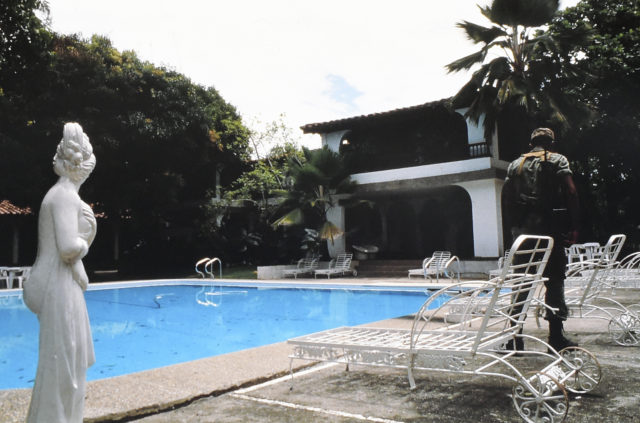
The rest of the property featured a beautiful Spanish colonial mansion, numerous swimming pools, and a grand sculpture garden filled with dinosaur statues and artistic sculptures. There were plush lawns of green grass, multiple man-made lakes, a private brothel, and even a private bullring. The estate was also equipped with an airstrip to provide him with his own private airport.
To showcase Escobar’s tremendous wealth, Hacienda Napoles was home to a massive collection of classic cars and bikes, as well as decommissioned military vehicles. An on-site go-kart track and Formula-1 racing track allowed him to take the cars for a joyride whenever he wanted.
Escobar built a private zoo on the grounds of Hacienda Napoles, equipped with creatures from all over the world. Animals like exotic birds, horses, ponies, antelopes, giraffes, elephants, rhinos, and ostriches all lived on the property. However, the most notable animals featured at the Hacienda Napoles private zoo were its four hippos.
The Colombian government took over Hacienda Napoles
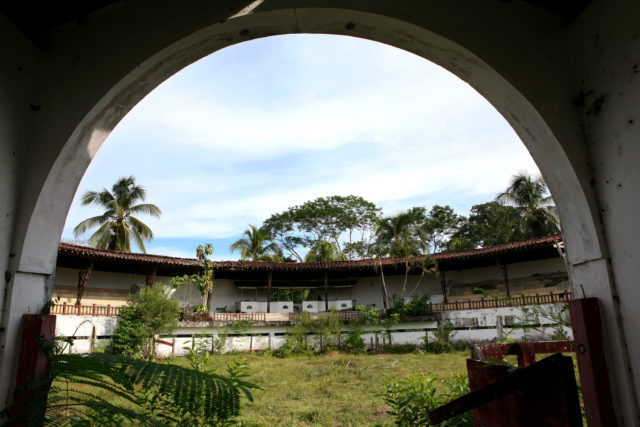
In December 1993, Escobar’s reign came to an end when he was gunned down and killed by the Colombian police. Following his death, his family was thrust into a battle with the government over his various assets, including who would take ownership of Hacienda Napoles. Eventually, the government took control of the estate, but for the most part, they allowed the buildings to become dilapidated.
One of the things the Colombian government had to deal with rather quickly was the zoo. It was swiftly discovered that the cost of upkeep for the private zoo was going to be far too expensive for the government. Thus, they took the necessary steps to have the majority of the animals relocated and donated to Colombian and international zoos.
For the most part, they were able to ship the animals to their new homes without any issues. However, there was a huge issue (literally) when it came to relocating Escobar’s cherished hippopotamuses. There were four hippos on the premises when Escobar died, and they were too difficult to capture and transport.
The problem with the hippos
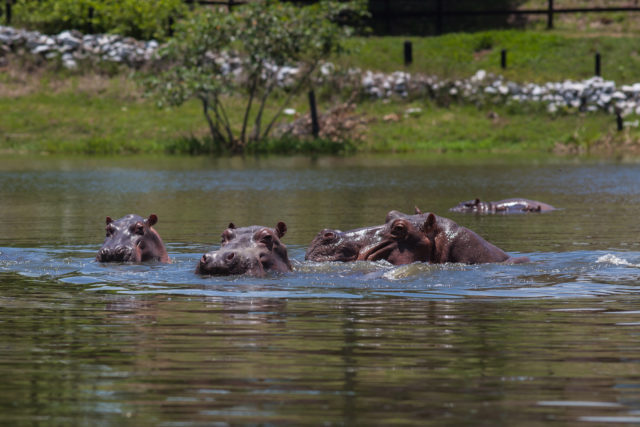
The Colombian government was unsure what to do with the hippos, so they opted just to let them live freely on the property. However, at some point, the hippos managed to escape. They also managed to get quite far from the estate. The hippos could be found living in at least four different lakes, as well as in the Magdelena River. In 2009, a hippo named Pepe was caught 100 kilometers away from Hacienda Napoles.
The hippos also multiplied at an alarming rate. In 2011, there were approximately 30 hippos living off the estate, with 40 living on Hacienda Napoles grounds. Today, it’s unclear how many hippos are living in the surrounding area, but it has been estimated to be as high as 100. These hippos have been declared an official invasive species and are believed to be altering the natural ecosystems found in this region.
Experts have suggested culling the hippos to try and not only reduce the number of hippos but also reduce their impact on the local ecosystem. Others have suggested sterilizing them to prevent any future breeding. However, as the feral hippos have wandered, the local people grew quite fond of the creatures and have protested several approaches to quell their rising population.
Hacienda Napoles was transformed into a theme park
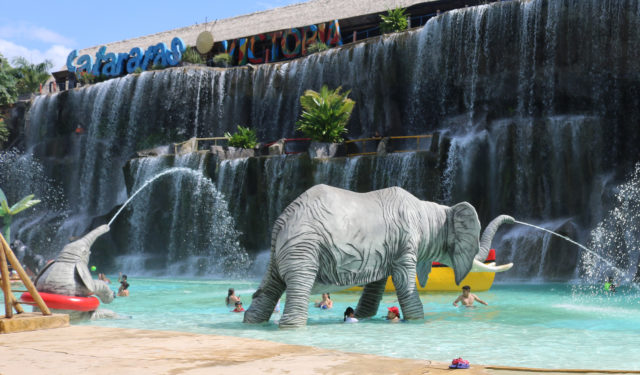
Beyond the hippo problem, Hacienda Napoles sat in derelict condition for years. Some of the buildings on the estate had roofs collapse, and the greenery became wildly overgrown. In 2010, a private company struck a deal with the Colombian government and took control of the land. After some construction, they opened the Parque Temático Hacienda Napoles.
This grand re-opening saw Hacienda Napoles transformed into a tourism hotspot. It now offers visitors of all ages fun with a water park with a “Victory Falls” water feature, a butterfly farm, a guided safari attraction, aquariums, replicas of Cueva de los Guacharos National Park caves, and several museums.
Taking advantage of some of the lavish exhibits Escobar established back when he owned the estate, the new theme park also offers its own unique attractions. Visitors can still walk through gigantic sculptures, as well as visit several exotic animals. Ostriches, zebras, monkeys, meerkats, and more are all available for viewing at the zoo, headed by the park’s mascot, Vanessa, who is a living female hippo.
Remnants of Escobar’s legacy
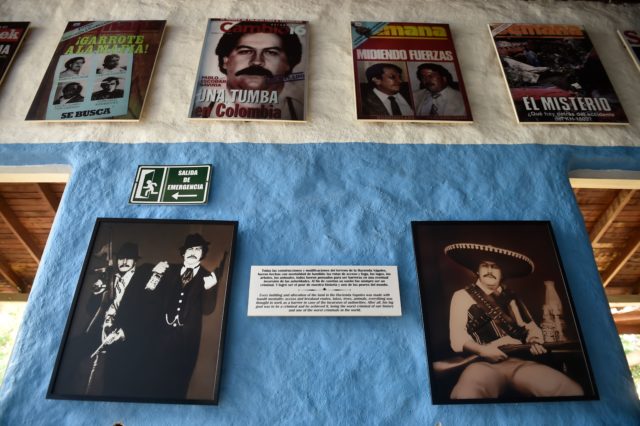
Over the years, there have been several efforts to try and remove Escobar’s spirit from Hacienda Napoles, especially since it was reborn as a tourist theme park. Unfortunately, a great source of reason for tourism in the area is because of the narcotics lord’s legacy. Going with the grain, the park offers visitors a look into the Memorial Museum dedicated to the estate’s previous owner, as well as access to his burned private car collection and the ruins of his old Spanish colonial house (which is reported to have collapsed in February 2015).
Although the appeal of the waterpark and zoo may be enough for some tourists, others have been known to make their way to Hacienda Napoles with shovels in hand. Sneaking into the property, several visitors have been caught trying to dig up the lawn in the hopes they may find some kind of treasure Escobar may have buried and left behind.
More from us: Fats Waller Was Kidnapped to Play Al Capone’s Birthday
At the front of the property, the Piper PA-18 Super Cub airplane still remains atop the archway, reminding visitors of the person who built the original Hacienda Napoles and how he was able to do it. The essence of kingpin Pablo Escobar simply cannot be removed from his favorite luxury palace.
